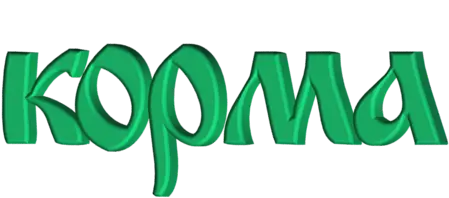Quail rearing
is considered a profitable business, as customers are willing to pay a decent price for their dietary meat and cholesterol-free eggs. An additional plus is the growth rate of these birds. At the time of reaching the age of two months, they weigh about 160 grams, while their fellow chickens are only about a hundred. In addition, a seven-week-old individual of this species is considered an adult.Выращивание перепелов
считается выгодным бизнесом, так как за их диетическое мясо и яйца без холестерина клиенты готовы платить приличную цену. Дополнительным плюсом считается скорость роста этих птичек. На момент достижения двухмесячного возраста они весят около 160 грамм, в то время как их собратья курочки всего около ста. Ко всему прочему семинедельная особь этого вида считается взрослой.
Complete feed
A complete diet should include:- proteins (beans, soy, maggot, blood meal, earthworm and others);
- carbohydrates (cereals and legumes);
- vegetable and animal fats (fodder fat, fish oil, sunflower cake and meal, hemp and soybean);
- vitamins (beans, chopped fish, cabbage, carrots, herbal flour and others);
- minerals (bone meal, shell rock, chalk, sand, table salt).
- for laying hens,
- for males
- for fattening for meat.
Diet for laying hens
It is distinguished by a high content of protein and calcium and a moderate content of carbohydrates and fats. Since the first pair helps to increase the productivity of the bird and the quality of the eggs, the second pair, on the contrary, provokes obesity and a decrease in the level of egg production.
In order for the food to be balanced, it is worth observing the following proportions:
- no more than 0.9 kg of feed per individual per month (daily requirement 25-30gmm);
- protein content: 20-25% of the total share;
- carbohydrates 45-60%;
- fats 3%;
- vitamins 7%;
- minerals 5%.
Diet for males
Its difference is that the rate of protein consumption, although higher than that of broilers, is not regulated as strictly as that of laying hens. That is, laying hens have a stricter framework: a deficiency causes a drop in egg production, an excess causes a double yolk and other egg defects. In males, however, it is different, an insufficient dose affects the percentage of inseminated eggs, but a slightly overestimated dose is much easier to tolerate. But only slightly.
Approximate male diet:- protein 20%,
- carbohydrates 45-60%,
- fats 3%,
- vitamins 8%,
- minerals 4%.
Diet for fattening
It is high in carbohydrates and slightly low in protein. Such a bird must rapidly gain weight, for this it needs carbohydrates in an amount exceeding its energy consumption. Protein in this amount is enough to ensure the body’s adaptation to rapid weight gain, but not to saturate the bird too much.
Diet:- protein no more than 15%,
- carbohydrates 60-75%,
- fats 4%,
- vitamins 5%,
- minerals 4%.
Feed varieties
The diet of quails is very diverse. Therefore, we will divide all the products they consume into groups.Grains, cereals, seeds
This group of products is quite extensive. But for the most part, its representatives are the main sources of carbohydrate in the composition of poultry feed. However, some may also boast a solid amount of proteins and vitamins in their composition.
Let’s have a look at representatives of this group:
- corn,
- soy,
- wheat,
- oats,
- peas,
- beans,
- poppy seeds,
- lentils,
- barley and others.
Vitamin supplements
This group includes products that are sources of vitamins and trace elements necessary for bird health.- Juicy herbs (dandelion, clover);
- vegetables (cabbage, carrots);
- fruits;
- herbal flour and others.
Mineral Supplements
Minerals make up a small percentage of the total feed mass, but despite this they are extremely important. These components are part of all body systems, without them normal functioning is impossible. For example, calcium. Without it, the development and functioning of bone and cartilage tissues is impossible.
They include:- shell rock,
- sand,
- chalk and others.
Animal Supplements
Such supplements are mainly animal protein sources. It is vital for birds, especially at the stage of growth and rapid weight gain. It is part of all cells and membranes of the body. The products of this group are also sources of fats of animal origin, which are necessary for the bird not only for the accumulation of fat reserves and heating, but also for the absorption of certain vitamins and amino acids.
This group includes:- eggs;
- chopped fish;
- fish flour;
- fish fat;
- animal fat;
- blood meal;
- bloodworm;
- maggot;
- earthworm and others.
Now you know what kind of bird a quail is and it will not be difficult to buy food. Happy shopping!
What to feed ducks and geese and turkeys?Read here:
Compound feed for goslings
Compound feed for ducklings
Compound feed for geese
Compound feed for ducks and geese
Compound feed for ducks
Compound feed for young turkeys
Compound feed for young ducks from 1 to 7 weeks






